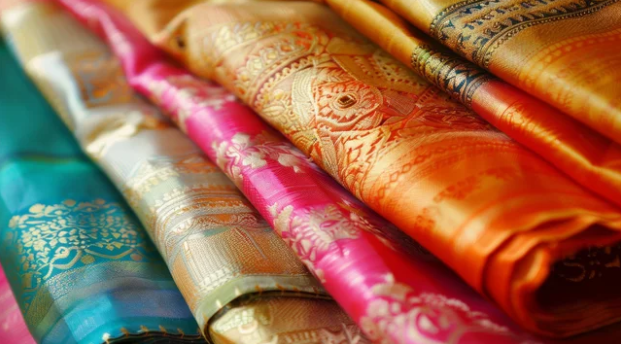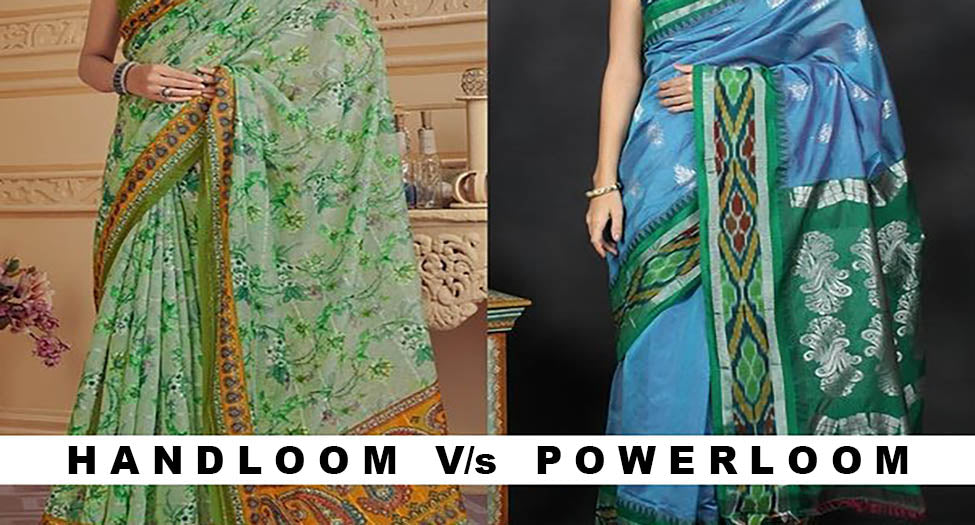
Are You Getting Duped ? Simple Tests to Identify Pure Silk Sarees
As the allure of silk sarees continues to captivate fashion enthusiasts around the world, the quest for authentic, pure silk becomes paramount. In the vast market of textiles, distinguishing genuine silk from its synthetic counterparts can be daunting. However, fear not! With a few basic tests, you can unravel the mystery of silk authenticity and ensure that your prized possession truly embodies the luxury and elegance of this timeless fabric. Here's how to identify pure silk sarees with confidence:
1. The Burn Test:
One of the most reliable methods to identify silk is the burn test. Simply pluck a few threads from an inconspicuous are of the saree, such as the hem or selvage. Hold the threads with tweezers and carefully bring them close to a flame. Genuine silk will burn with a smell similar to burning hair and produce a fine, black ash. Once the flame is removed, the ash should crumble easily with a gentle touch. Synthetic fabrics, on the other hand, will often emit a chemical odor when burned and leave behind hard, bead-like residue.
How to Judge genuine silk from the artificial ones?

2. The Hand Feel:
The tactile experience of silk is unmistakable. Pure silk sarees have a smooth, luxurious texture that glides effortlessly against the skin. Run your fingers over the surface of the saree, paying attention to the drape and sheen. Genuine silk has a soft, supple feel and reflects light with a natural luster. Synthetic imitations may feel rougher to the touch and lack the subtle shimmer characteristic of silk.

3. The Visual Inspection:
A close examination of the saree's weave and design can provide valuable clues about its authenticity. Pure silk sarees often feature intricate handwoven patterns and motifs, showcasing the craftsmanship of skilled artisans. Look for irregularities in the weave, such as slubs or variations in thread thickness, which are characteristic of handloom silk. Additionally, inspect the selvage of the saree for any labeling or markings indicating the fabric composition.

4. The Water Test:
Another simple test to distinguish silk from synthetics is the water test. Dip a corner of the saree into a bowl of water and observe the fabric's reaction. Genuine silk has natural protein fibers that are hydrophilic, meaning they absorb water readily. As a result, the dipped area of the silk saree will become damp but dry quickly when removed from the water. In contrast, synthetic fabrics are hydrophobic and repel water, causing droplets to bead up on the surface without being absorbed.
5. The Light Test:
Silk's inherent luster and translucency can be revealed through a light test. Hold the saree up to a light source and examine how the fabric interacts with light. Pure silk sarees will exhibit a subtle, glowing effect, with light passing through the fabric to create a luminous sheen. This characteristic luminosity is difficult to replicate in synthetic fabrics, which may appear dull or flat when held against light.
In conclusion, by employing these simple tests, you can confidently identify pure silk sarees and ensure that your collection from Indian Handloomz embodies the timeless elegance and luxury of authentic silk. Embrace the beauty of handcrafted textiles and indulge in the sophistication of pure silk sarees that stand the test of time.




Leave a comment
This site is protected by hCaptcha and the hCaptcha Privacy Policy and Terms of Service apply.